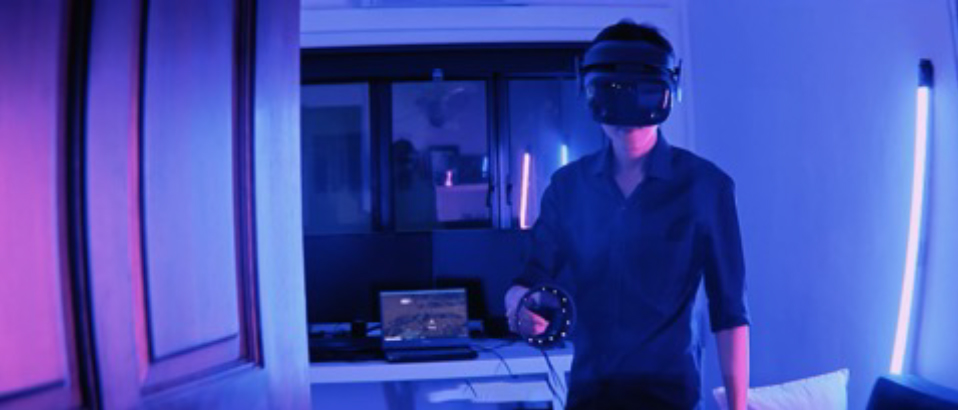

Virtual Reality (VR) is the use of computer technology to create a simulated environment. Unlike traditional user interfaces, VR places the user inside an experience. Users are immersed and able to interact with 3D worlds. By simulating as many senses as possible, the computer is transformed into a gatekeeper to this artificial world.
Back in 2014, I started watching an anime called Sword Art Online, one of the most well known anime at the time. The story was set in the near-future, year 2022, where VR headsets called NerveGear were capable of fully utilizing the 5 senses of a person by directly stimulating the mind of the user. Allowing the player to control the character with their minds and feel every stimulation as if it was real. A popular VR Mass MultiPlayer Online Game (MMORPG) was just launched, attracting 10,000 players to log in and play, only to find out that they were not able to log out, and that death in this virtual world meant braindeath in reality and the only way to get out of this world was to clear all levels of the game.
Humans rely strongly on their senses of sight and hearing, and modern day VR companies are trying to utilize the most of that. VR HMD comes with higher resolution screens such as 1440p, with hopes of getting 4k in the future. With the introduction of Spatial audio being actively developed now, people react to sound first before sight, and the direction and intensity of the sounds help to sell the depth of the scene. All these can heavily affect immersion and the user’s VR experience.
While the actual sense of touching the 3D objects physically is missing, the controllers nowadays are designed to be ergonomic and have triggers to put your fingers on, where you can replicate fists, finger and thumb movements and grabbing in VR. Grabbing guns and swords feel especially good in VR, as controllers are shaped to make you feel like you are grabbing the handle of an object.

According to research done by John Hopkins Medicine Department of Surgery, it is now possible for patients using Myoelectric prosthetic arms to use sensors to sense the electric signals generated by their muscles and translates that to use a machine arm naturally. Therefore, it is theoretically possible to attach it to more parts of the body and have VR control.
I also hope to see more VR artistic creations in the art museums. If VR comes with the introduction of painting in 3D space, artists are able to catch onto this new style of art, we could be welcomed to greater art pieces in the future. I could see potential in VR interior design showcases related programs that have multiple templates and layouts for consumers to create their dream layout and share with the interior designers and vice-versa. I believe VR is something that will continue to be developed for years to come and bring big changes to the world of media consumption.